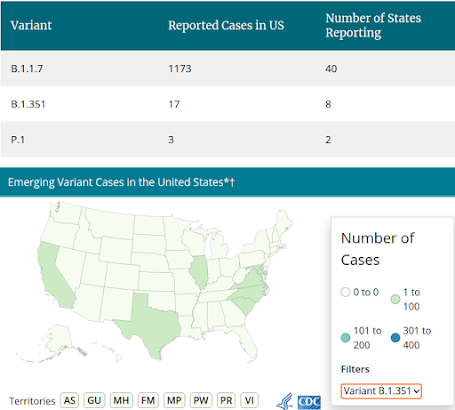
In some states - like Oklahoma, Mississippi, Missouri, Tennessee, and South Dakota - that number drops to less than 1 in 2000.
While work is underway to increase genomic sequencing capacity, for now considerable gaps remain in our national surveillance for variants. There are also delays of 10 days or more from the time a test is selected for sequencing, before the results are published.
While there are other variants, like CAL.20C, which are known to circulate within the United States, for now the CDC only tracks the B.1.1.7, B.1.351, and P.1 variants on this map.
With those caveats in place, we have the CDC's latest interactive map showing these 3 COVID variants detected across the country. A week ago, the CDC showed 699 variants across 34 states, with 690 classified as B.1.1.7.
Today, that total has jumped by more than 70%, with 1193 variants reported across 41 states, with 1173 of those classified as B.1.1.7.
While early analyses suggested there was no evidence that - other than being more transmissible - this variant posed any greater danger to human health, in recent weeks we've seen several studies suggesting it may carry a 30% to 70% higher fatality rate.
We know far less about the B.1.351 and P.1 variants, although early studies suggest they may be more resistant to current vaccines, and those infected with the 2020 `wild type' COVID may be at greater risk of reinfection (see Denmark: SSI Risk Assessment On E484K SARS-CoV-2 Mutation).
